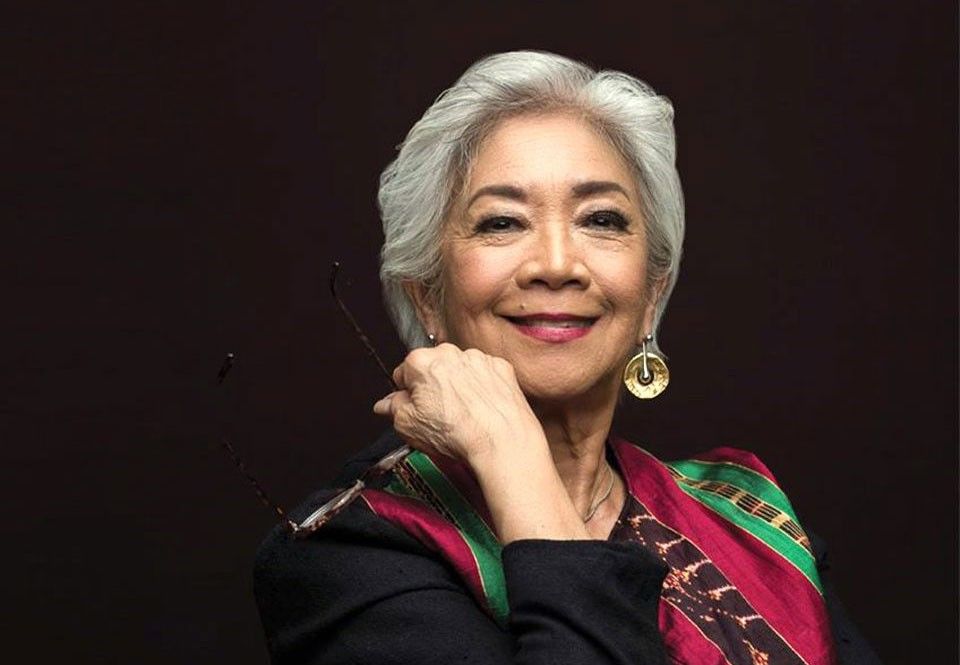Celebrating Alice Reyes and a tapestry of dance

MANILA, Philippines — They say that the best form of revenge is to live well. Instead of plotting retributive “justice,” one might do better not to cast a backward glance at everything mean and petty and downright nasty but instead focus one’s feistiness on moving inexorably forward. On Friday night, Feb. 21, Alice & Friends mounted the CCP grant-supported “tapestry of dances in celebration of 50 years in dance at the CCP” at the Main Theater, thus proving that an even better form of revenge is to dance well.
Ostensibly as a prophylactic against the spread of the Covid-19 dread, the Ballet Philippines board of trustees cancelled “Itim Asu and Other Dances,” the company’s penultimate program for its golden season, for which the dancers had been rehearsing. However, considering that the CCP has been playing host to various performances and activities amidst the viral epidemic, the board’s decision only served to stoke the flames of public opinion about what one broadsheet’s editorial has called out as a “cavalier” treatment of BP founder and outgoing artistic director Alice Reyes, the National Artist for Dance, by certain members of the board who seem not to have read the recently published NCCA/CCP book Alice Reyes and Ballet Philippines: A 50-Year Legacy in Dance, which might have educated them about how any meaningful, sustainable, and deeply satisfying “moving forward/beyond” is contingent upon the hard-won lessons of legacy. And so, in a classic case of Life imitating Art, Friday evening’s dance celebration became a form of triumphant karmic retribution mirroring the satisfaction of the title dance’s avenging angels.
On Feb. 21, 1970, Alice Reyes mounted the first modern dance concert at the CCP. Months later, she would stage Itim Asu, based on Virginia Moreno’s prizewinning play The Onyx Wolf about the vengeance exacted by the widow of the assassinated Governor-General Bustamante. Set to spectral, portentous music by Alfredo S. Buenaventura and with the sets quickly constructed by Eric Cruz and the CCP Production Design Center (as the BP administration had sequestered the sets), the original choreography — staged presently by Nonoy Froilan — stuns with the writhing, mesmeric figure of La Loba Negra. Rage alchemizes dancer Denise Parungao from bridal white to vermilion-lined onyx, a methodical malevolence stalking the murderous mob. The stylized violence is seductive, ultimately leading to a visual denouement as bloodcurdlingly resonant as a wolf’s howl.
Yet Itim Asu comes after the intermission, so it is not upon cathartic vendetta that the curtains rise. The show begins with the world premiere of current BP associate artistic director Adam Sage’s Glinka’s Valse, an ebullient choreography brought to life by Katrene San Miguel and her equally skillful fellow dancers. The women then make way for the quartet of men in Erl Sorilla’s intimate commentary on gender constructs, Man Pointe, defamiliarizing movement to challenge the mind’s elasticity. Soon enough, the familiar comes crooning in courtesy of the Philippine Madrigal Singers’ recording of Filipino folk songs set to dance by Alice Reyes: Bungkos Suite. It is a delightful medley of movements, the dancers animating Filipiniana attire in playful yet measured abandon. Kindred to Sorilla’s earlier piece, Lester Reguindin’s We features a bigger cast, peopled by male and female bodies that besiege the indeterminate bodies of dancers Jessa Tangalin and Ricmar Bayoneta. The title suggests the eventual triumph at the end: that our identities do not have to be either/or but can be both/and. Rounding out the first half of the show is the Czechoslovakian-inflected Ne Neh Ledej, a whimsical melange of neoclassical and modern that charms the audience into suspending disbelief in the coherence of such strangely beguiling elements. After Itim Asu’s three-scene descent into canine carnage, a solo levitation takes place to the tune of Negro Spirituals. Of the three songs danced by Jessa Tangalin, whom Alice would praise for being a phenomenally quick learner, the third one had been performed by Alice herself at the first CCP modern dance concert 50 years to the day. Finally, in a bracing piece by Bam Damian called Afterwhom, the entire corps takes to the stage in minimalist wear, the better to show off what anatomy can aspire to, what a formidable dance company nurtured by a collaborative artistic director looks like. As the entire cast remains on stage to everyone’s raucous adulation, Alice Reyes joins them and offers words of thanks to everyone involved in the evening’s celebration, whereupon the golden confetti rains down as Alice’s friends of a lifetime climb in procession to offer her roses.
It is not even the end of the new year’s first quarter, but Alice and her dancing friends have already weathered volcano, virus, and villainy. For indeed, inadvertent yet serendipitous as vengeance is, to live well is to do what one does best — what Alice & Friends have witnessed for 50 years: dance, dance, dance.



















